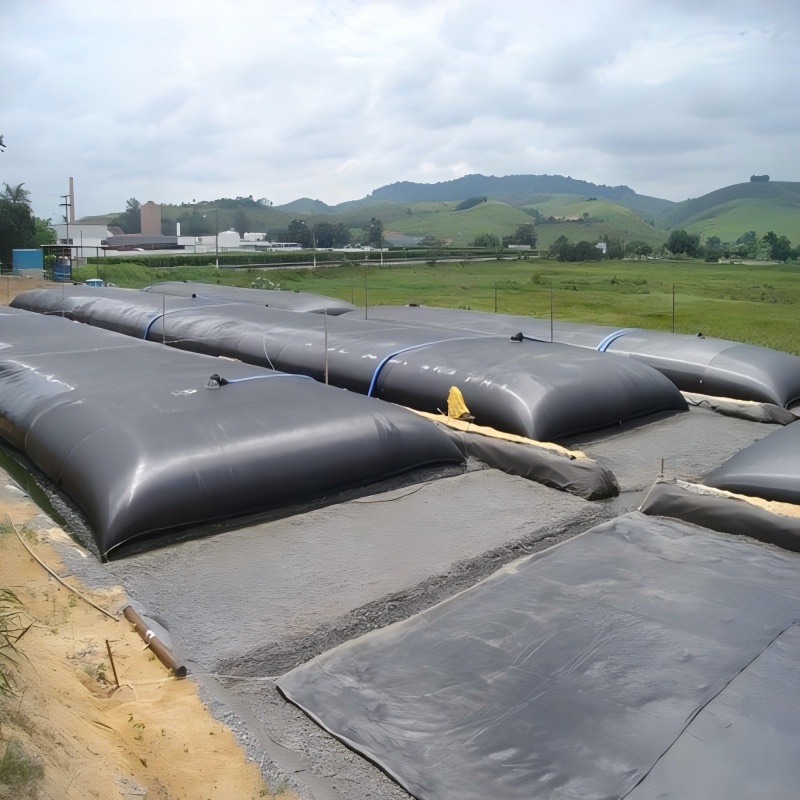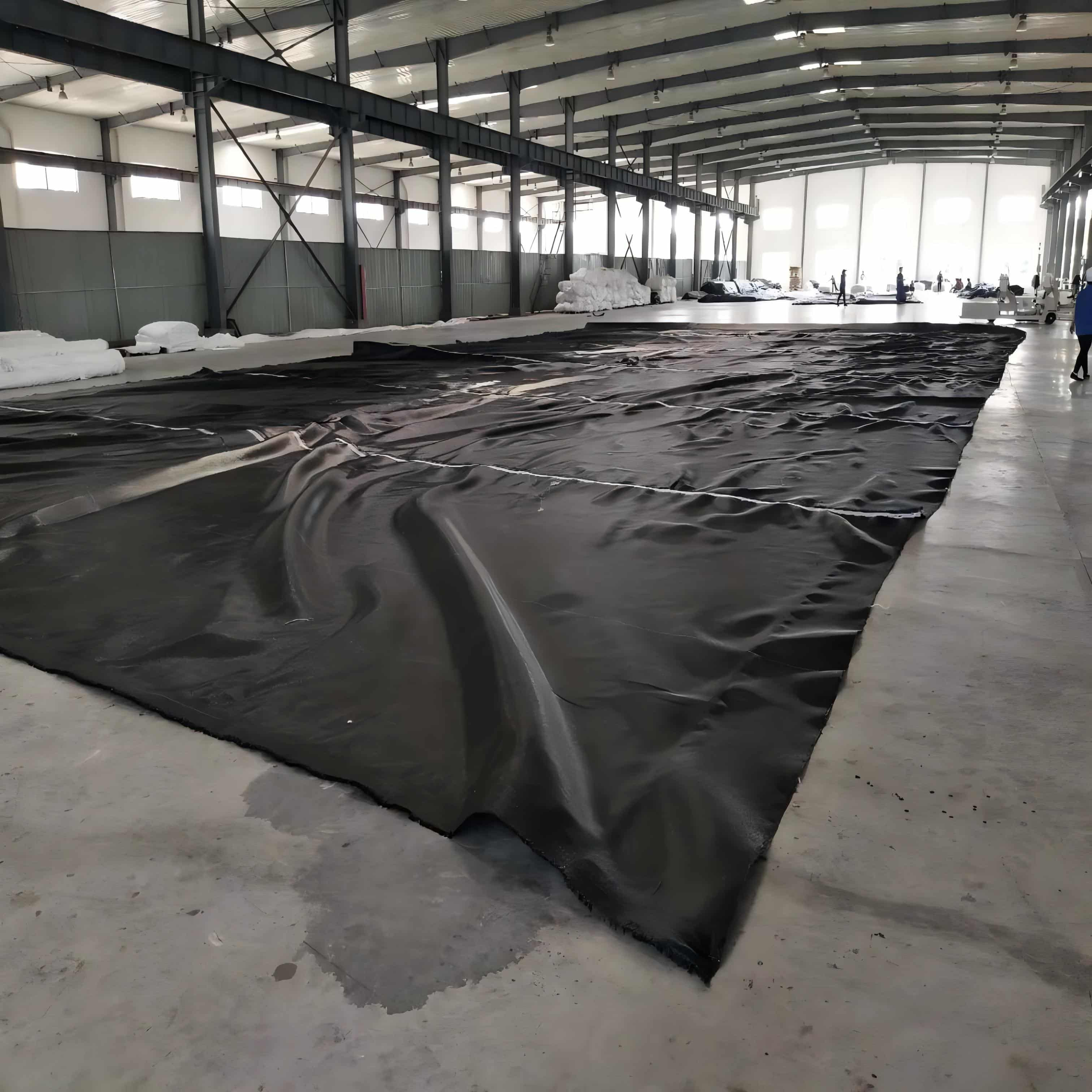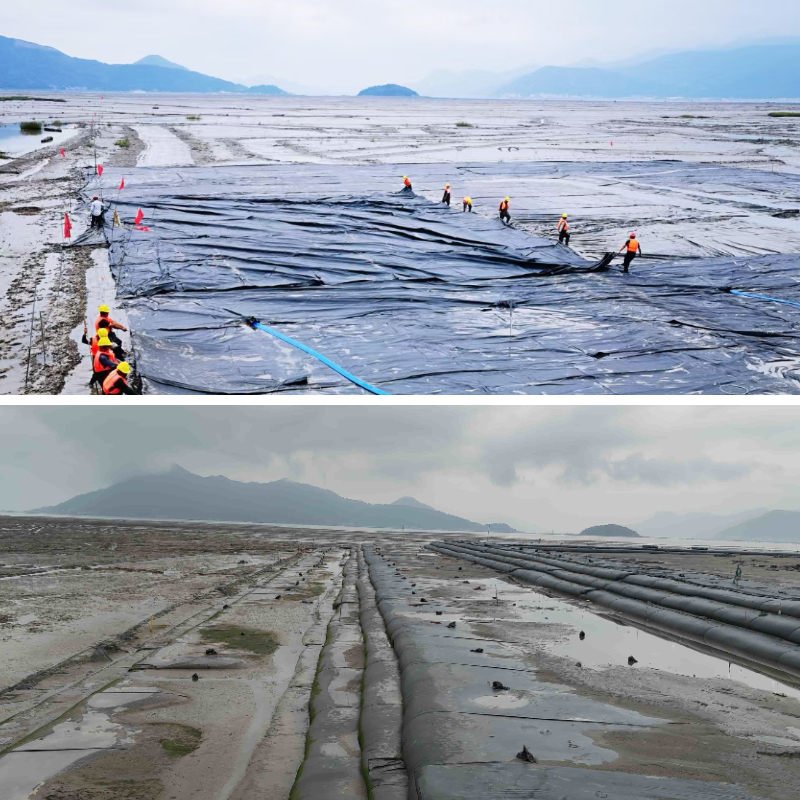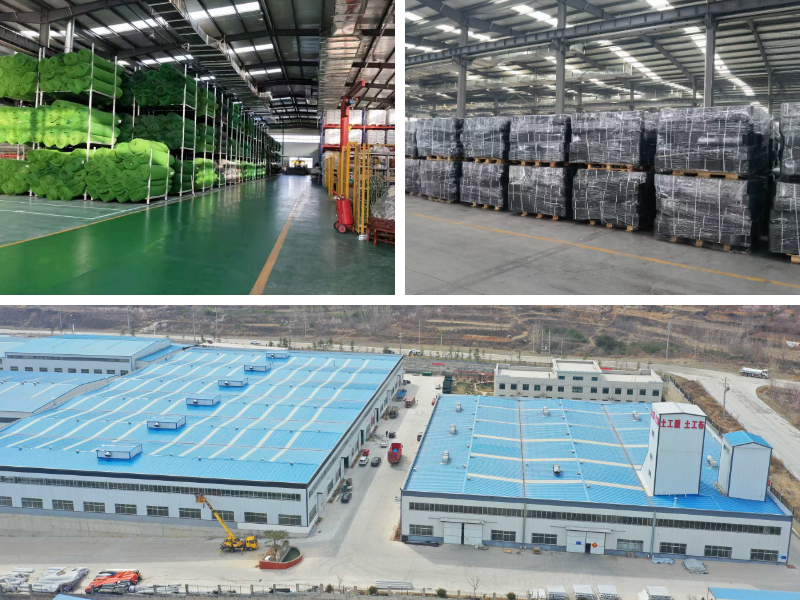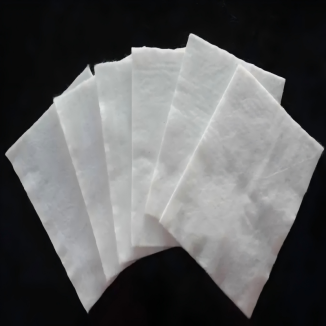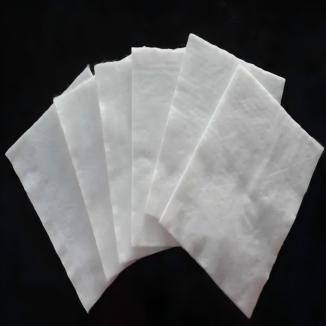Geotube Bags
1. High cost-effectiveness:
Compared to traditional materials, material and transportation costs have significantly decreased. The construction speed is fast, greatly saving time and construction costs.
2. Environmentally friendly:
It can effectively 'wrap' polluted sludge and waste to prevent the leakage of harmful substances and avoid secondary pollution.
3. Simple and efficient construction:
The construction process is relatively simple, with the main procedures being filling and dehydration, and can be operated underwater to adapt to various complex terrains.
Product Introduction:
Geotube Bags is a large tubular bag made of high-strength geotextile (mainly polypropylene or polyester woven fabric).
The core working principle is the filling dehydration technology:
Fill liquid mud (such as river silt, industrial sludge, tailings, etc.) into the pipe bag with a pump. Geotextiles act as a "filter" that allows water molecules to seep out under pressure or natural gravity, while effectively trapping solid particles inside the bag. After multiple rounds of filling and dehydration solidification, a sturdy and stable soil structure or solid waste inclusion is ultimately formed.
Features:
1. High strength and durability:
The geotextile used for making tube bags has undergone special treatment and has extremely high tensile strength, puncture resistance, and UV resistance. It can withstand the pressure of internal fillers and the erosion of external environments.
2. Excellent permeability and soil retention:
This is its core technological feature. The aperture of the fabric is precisely designed to quickly remove moisture while ensuring that the majority of solid particles are retained in the bag, resulting in high dehydration efficiency.
3. Flexibility and adaptability:
As a flexible structure, it can adapt well to uneven settlement of the foundation and is not easily broken or damaged.
It can be customized into various diameters and lengths according to engineering requirements, with flexible shapes.
4. Integrity and stability:
After stacking multiple tube bags, they will tightly interlock with each other and form a large volume stable whole through the solidification of the filling material, which has good resistance to hydraulic erosion and wind waves.
Product Parameters:
project | unit | CWGD50S | CWGD90/120 | CWGD90S | CWGD100S | CWGD120S-B | CWGD120S-C | CWGD130S | CWGD200S-C | |
Tensile strength-radial | kN/m | 55 | 90 | 90 | 100 | 130 | 130 | 130 | 220 | |
Tensile strength-Weft | 50 | 120 | 90 | 100 | 120 | 120 | 130 | 210 | ||
Strain elongation-radial | % | 16±1 | 12±1 | 9±1 | 10±1 | 10±1 | 10±1 | 10±1 | 12±1 | |
Extensional elongation-Weft | 10±1 | 8±1 | 8±1 | 8±1 | 8±1 | 8±1 | 8±1 | 8±1 | ||
Breakage strength at 2% elongation | warp direction | kN/m | 5/15 | 14/40 | 30/30 | 30/30 | 20/40 | 22/40 | 20/45 | 15 |
Breakage strength at 5% elongation | warp direction | kN/m | 14/33 | 38/90 | 75/75 | 75/75 | 80/100 | 84/40 | 80/110 | 90 |
mass area ratio | g/m² | 285 | 440 | 390 | 430 | 540 | 540 | 560 | 850 | |
Joint tensile strength | kN/m | 35 | 90 | 60 | 70 | 100 | 100 | 110 | 170 | |
Static Burst Strength (CBR) | KN | 5 | 10 | 10 | 13 | 15 | 15 | 16 | 22 | |
Dynamic perforation | mm | 10 | 8 | 12 | 12 | 10 | 10 | 11 | 8 | |
Equivalent aperture (0g0) | mm | 0.9 | 0.48 | 0.52 | 0.45 | 0.4 | 0.3 | 0.43 | 0.4 | |
Permeability (Q50) | L/m²/s | 200 | 40 | 20 | 15 | 12 | 6.5 | 15 | 15 | |
Ultraviolet resistance (500h strong storage rate ) | % | 90 | 90 | 85 | 85 | 85 | 85 | 85 | 85 | |
Product Applications:
1. Water conservancy and flood control engineering
Embankment reinforcement/elevation: Fill the outer side of the original embankment with geotextile bags to form a composite structure of "anti erosion foot protection+embankment body elevation", replacing traditional stone throwing foot protection and reducing the risk of embankment settlement (such as the Yangtze River middle and lower reaches embankment reinforcement project);
River dredging solid waste treatment: The sludge (with a moisture content of 90%+) generated by river dredging is filled into a pipe bag, dehydrated and solidified to form a "sludge solidified body", which can be directly used for river slope repair or as filling material to avoid pollution caused by sludge transportation.
2. Marine and mudflat engineering
Reclaiming land from the sea/artificial island construction: taking geotextile pipe bags as the "core structure", pile them in the mudflat area to form a dike, replacing the traditional earth rock dike, and reducing the amount of stone materials (such as China's southeast coastal reclamation project);
Coastal protection/breakwater: Fill large-diameter pipe bags (diameter 5-8 meters) at the forefront of the coast to form a "flexible breakwater", using the flexible buffering effect of the pipe bags to resist wave impact and protect the coastline from erosion.
3. Environmental governance engineering
Sludge disposal and resource utilization: Treating municipal sewage treatment plant sludge and industrial sludge (such as chemical and printing and dyeing sludge), after filling and solidification, can achieve "reduction (volume reduction of more than 50%)+stabilization (heavy metal solidification rate of 80%+)", and some can be used for ecological restoration after meeting standards;
Tailings pond treatment: Fill the mine tailings slurry (containing a large amount of fine sediment) into the pipe bag, and after solidification, form a "tailings consolidation body", which can be used for reinforcing the tailings pond dam body or reclaiming the foundation of the covering soil, reducing the risk of tailings pond leakage.
4. Roads and Geotechnical Engineering
Soft soil foundation treatment: Lay geotextile bags in soft soil roadbeds (such as swamps and silty soils), fill them with sand and gravel or solidified soil, form a "pipe bag composite foundation", improve the bearing capacity of the foundation (the bearing capacity can be increased from 50kPa to over 150kPa), and reduce roadbed settlement;
Roadbed filling/slope protection: Using "solid blocks" solidified with pipe bags as roadbed filling materials, especially suitable for areas lacking sand and gravel resources. At the same time, pipe bags can be stacked on road slopes to prevent slope collapse.
5. Ecological restoration project
Wetland restoration/construction of artificial wetlands: Use the dredged sludge consolidation pipe bag as the wetland base, cover the surface with planting soil, and plant aquatic plants to achieve the integration of "sludge disposal+wetland reconstruction" (such as lake wetland restoration projects);
Mine reclamation: Fill abandoned mine slag and tailings into pipe bags, stack them to form slopes or bases of the reclaimed site, and then cover the soil with vegetation to reduce ecological damage to the mine.
In summary, with the core advantages of "low cost, high efficiency, and environmental friendliness", geotextile bags have become a key technology for solving engineering problems such as "treatment of dispersed media+construction of flexible structures". In the future, with the upgrading of material technology, their application scenarios will also expand to deeper water and higher strength demand fields.


